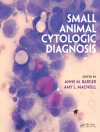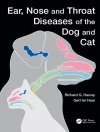Stress and Pheromonatherapy in Small Animal Clinical Behaviour is about how stress impacts on animal behaviour and welfare and what we can do about it, especially by using chemical signals more effectively. This readily accessible text starts from first principles and is useful to both academics and practitioners alike. It offers a framework for understanding how pheromonatherapy can be used to encourage desirable behaviour in dogs and cats and also a fresh approach to understanding the nature of clinical animal behaviour problems.
The authors have pioneered the use of pheromone therapy within the field of clinical animal behaviour. As the culmination of many years of research and experience, they offer sound evidence-based advice on how and when pheromones can be used most effectively.
The first part of the book deals with some fundamental concepts, focusing on the key concepts of stress, communication and perception. It then provides a framework for the evaluation of problem behaviour to allow consideration of the possible role or not of pheromonatherapy. Part 2 covers the application of these concepts to a range of specific situations, concentrating on conditions in which there has been most research to support the efficacy of pheromonatherapy.
Suitable for veterinarians in small animal practice, students of clinical animal behaviour, veterinary nurses and technicians, as well as specialists and researchers in animal behaviour therapy.
Innehållsförteckning
Preface vii
Part I Principles and Concepts Underpinning the Management of Stress-related Behaviour Problems 1
1 How Animals Respond to Change 3
2 Affective Processes and the Organisation of Behaviour 37
3 Communication and Information Transfer 69
4 Assessment of the Problem-behaviour Patient 92
5 An Approach to the Management of Problem Behaviour 111
6 Principles of Pheromonatherapy 127
Part II Clinical Scenarios Involving the Management of Stress-related Behaviour Problems 147
7 Feline House-soiling Problems 149
8 Separation-related Behaviour Problems in Dogs 170
9 Sound Sensitivity 191
10 Travel-related Problems in Pets 215
11 Introducing the New Dog or Cat into the Home 225
12 Stress and Pheromonatherapy in the Veterinary Clinic 242
Appendix A 257
Appendix B 259
Glossary 264
Index 271
Om författaren
Daniel Mills is Professor of Veterinary Behavioural Medicine at the University of Lincoln, UK and is a European and RCVS Recognised Specialist in Veterinary Behavioural Medicine. He offers a referral clinic for animals with behaviour problems, as well as providing consultancy to a range of organisations in the animal care and science industries. He has conducted extensive research in this field over the last 15 years and co-ordinates independent trials of potential new products in addition to developing his own initiatives which focus on improving behaviour while safeguarding welfare. He lectures internationally on companion animal behavioural medicine, as well as teaching the management of animal behaviour problems at both the University of Lincoln and Nottingham Vet School.
Dr. Maya Braem Dube is a veterinary behaviourist who completed her veterinary studies and a doctorate at the University of Bern, Switzerland. She did a post-doc with Professor Daniel Mills at the University of Lincoln where she was also a guest researcher and worked in the behaviour clinic. Since moving back to Switzerland in 2008, she has been working in her private practice for veterinary behaviour and herbal medicine in both the German and French parts of Switzerland and offers behaviour consultations at the Veterinary Hospital of the University of Zürich.
Helen Zulch is a veterinarian who worked in a number of areas of veterinary science before moving into the field of clinical animal behaviour over 10 years ago. She lectures on both undergraduate and postgraduate programmes at the University of Lincoln and contributes to the programme at Nottingham Vet School. In addition she consults in the Animal Behaviour Clinic at the University of Lincoln and is engaged in research in a number of areas within the discipline. Her chief interests include problem prevention, learning and training, olfaction and the integration of behaviour into the care of patients in general practice.












